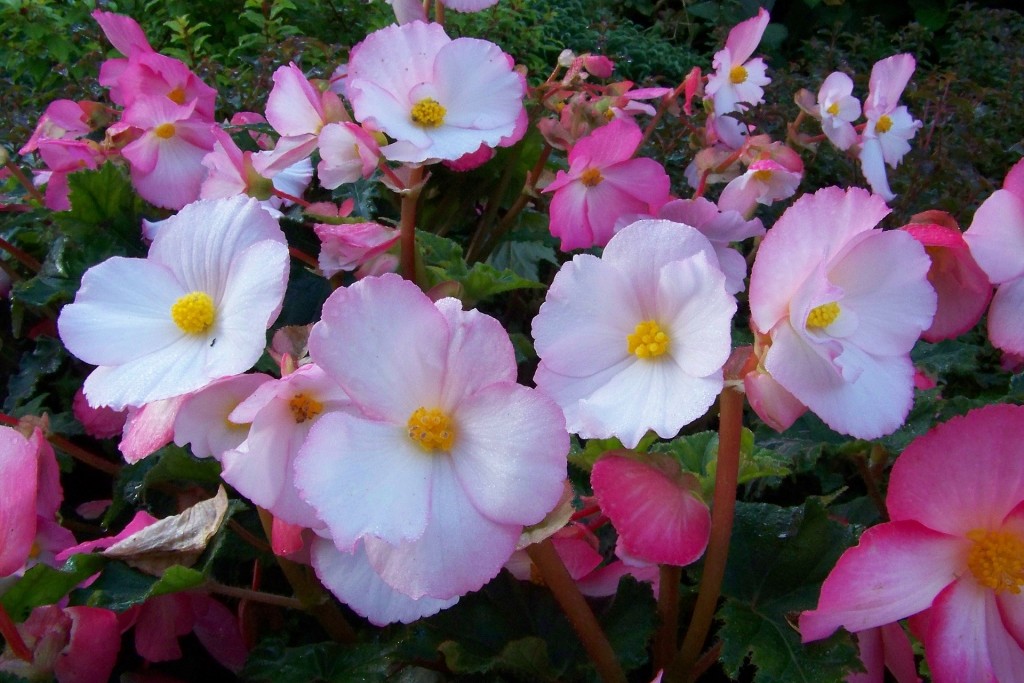Begonias are an annual plant that can provide beauty to any garden. They come in a variety of colors and can thrive in an array of conditions. They are a popular houseplant that are easy to take care of. Here are some tips about caring for your begonias this spring.
Planting from Tubers
If you are planting tuberous begonias, make sure you plant them only after the winter frost is over. You’ll have plenty of time as tubers can be planted from February to June. Plant your tubers indoors about 8 weeks before transplanting them outdoors. Fill a flat box or small pot 2-2 1/2 inches deep. These flowers need around 2 inches all the way around the roots. Place the tubers hallow side up with the top just below the surface. The soil needs to be moist, but not over watered or the plant will not grow properly. In 2-3 weeks after the sprouts emerge, make sure you provide ample light.
Transferring to a Pot or Outdoors
Transferred your begonias any time after good root development or when the top growth is not more than 4 to 5 inches tall. Plant with 1-1 1/2 inches soil covering the top of the tuber in a well-drained garden or a large pot 8 inches or larger. Large pots not only produce fuller plants. They also provide better stability and multiple small tubers can be planted in a single pot. Depending on the environment, begonias will bloom in 12-20 weeks after planting.
Temperature
The ideal temperature for begonias is around 72º F, however, temperatures slightly higher or lower are ok. Begonias grow well in warmer, more humid temperatures.
Sunlight
Begonias do best in locations that have daily full or partial morning sunlight. They will need more sun in cooler climates. They also tolerate receiving full sun in the morning and shade in the afternoon. That being said, they should not be planted in full shade.
Water
Begonias need to be kept moist at all times. Spraying the plants with water on hotter days will help keep their optimal cool, moist conditions. Also keeping them on a regular watering schedule is ideal. The soil should be moist, but not too wet or soggy. If the soil is dry, the plant needs water. If the soil is wet, the plant has too much water. Too much water can cause the roots to rot can kill the plant.
Fertilizer
Begonias need a mild fertilizer once a month throughout the season. Try fertilizing lightly the first few weeks of planting to avoid too much foliage growth and to promote earlier blooms.
Pruning
Prune your begonias when any blooms are faded or dead. By taking off the deadheads, the plant will not spend excess energy trying to revive them and will continue to be healthy.
Diseases
Begonias are susceptible to various fungi and bacteria. Make sure they are in an environment that provides good airflow to prevent mildew. If necessary, use a fungicide, but only as directed on the label.
Dormancy
In autumn, after your plants’ leaves have turned yellow and the blooms are gone, withhold water so that the soil can dry completely. Leave your tubers in pots or lift and store them in a cool, dry (but not freezing) place until next spring.
